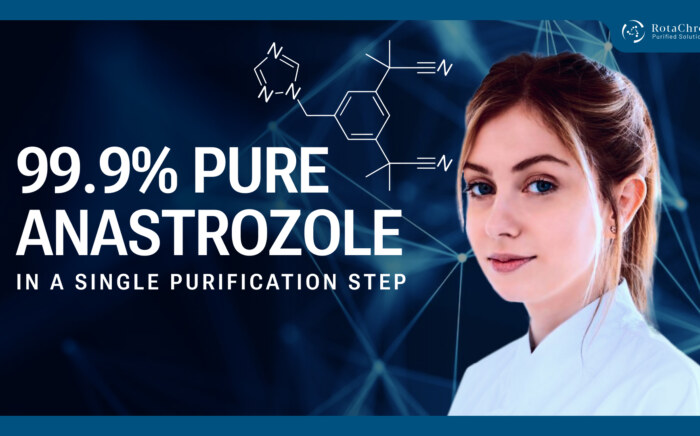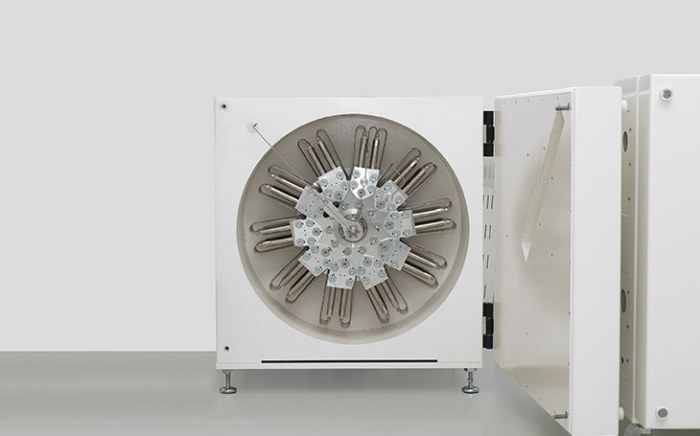Increasing separation efficiency by pH adjustment in Centrifugal Partition Chromatography
NewsIsomers and Chromatography
Chromatography remains at the forefront of isomer separation, crucial for pharmaceuticals where purity and stereochemistry directly impact efficacy and safety. Isomers, particularly stereoisomers, are pivotal in drug development as they often exhibit distinct biological activities. One such example is Nebivolol, a selective β1-receptor antagonist and antihypertensive medication, whose synthesis hinges on precise isomer separation.
Nebivolol and Its Stereochemical Complexity
Nebivolol is a widely prescribed β-blocker with a complex stereochemical profile. Its structure includes four asymmetric carbons, theoretically allowing for 16 stereoisomers. However, the molecule’s symmetry reduces this number to 10. Traditionally, the synthesis of Nebivolol hydrochloride involves a racemic mixture of two enantiomers, administered as such. For industrial production, stereocontrolled synthesis methods employing transition metal catalysts are often costly and environmentally taxing. Alternatively, enriching the desired stereoisomers early in the synthetic pathway can streamline production and reduce costs.
A critical intermediate in Nebivolol synthesis is chromane epoxide, comprising two diastereomers. By isolating these diastereomers at the outset, the synthesis achieves higher diastereomeric excess, enabling cleaner conversions and simplified purification steps. This study focuses on the separation of these chromane epoxide diastereomers using advanced chromatography techniques.
Methodology: Optimizing Solvent Systems for Separation
The separation process began with solvent system screening to identify the most suitable conditions. A ternary system of n-hexane/methanol/water emerged as optimal, yielding partition coefficients of 1.5 and 0.8 for isomers 3 and 4, respectively. These values translated to a selectivity factor of 1.87 in descending mode. Using this system on a lab-scale CPC instrument resulted in both diastereomers achieving >99% purity, with yields of 99.6% and 74%, respectively.
Scaling Up: Pilot-Scale Optimization
Building on lab-scale success, the method was refined for pilot-scale application using ascending elution mode. This configuration facilitated the isolation of both diastereomers with a throughput of 14.4 g/h, achieving purities exceeding 99% and yields above 90%. The choice of ascending mode proved advantageous, as it delivered compound 3 in the upper alkane phase. This significantly simplified the work-up process, requiring only solvent removal under reduced pressure.
In contrast, descending mode offered higher selectivity but required more complex aqueous-phase work-up involving stronger vacuums or elevated temperatures for water evaporation. While descending mode might suit specialized applications with nanofiltration, ascending mode remains the preferred choice for industrial scalability.
Sustainability and Recyclability
The optimized n-hexane/methanol/water biphasic system was found to be straightforward, recyclable, and adaptable for both pilot-scale and industrial-scale CPC instruments. Solvent recovery and reusability further enhanced the method’s ecological and economic appeal, aligning with the pharmaceutical industry’s sustainability goals.
Industrial Implications
The ability to isolate chromane epoxide diastereomers with high purity and yield early in the synthetic pathway enhances the overall efficiency of Nebivolol production. By adopting this CPC-based approach, manufacturers can reduce reliance on costly stereocontrolled synthesis and transition metal catalysts, making the process more cost-effective and environmentally friendly.
Conclusion
Chromane epoxide separation via CPC exemplifies the transformative power of chromatography in pharmaceutical manufacturing. With its blend of precision, scalability, and sustainability, CPC sets a new standard for isomer separation.
To explore more about cutting-edge chromatography solutions, visit RotaChrom’s website, or click any of the links below.



